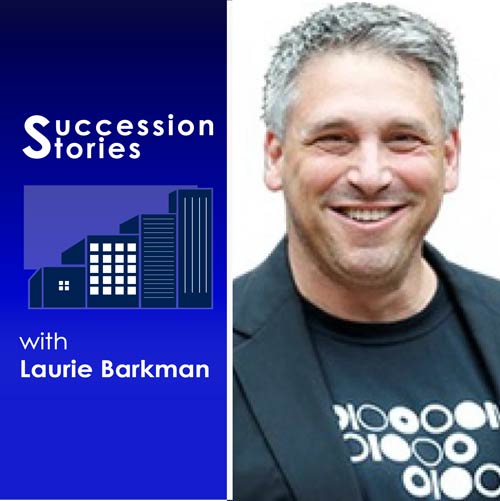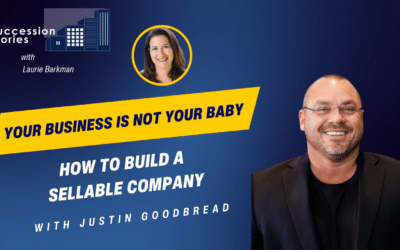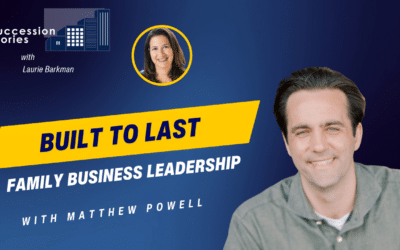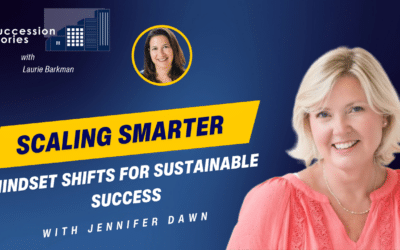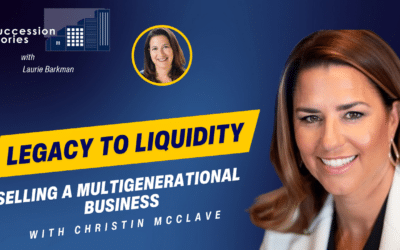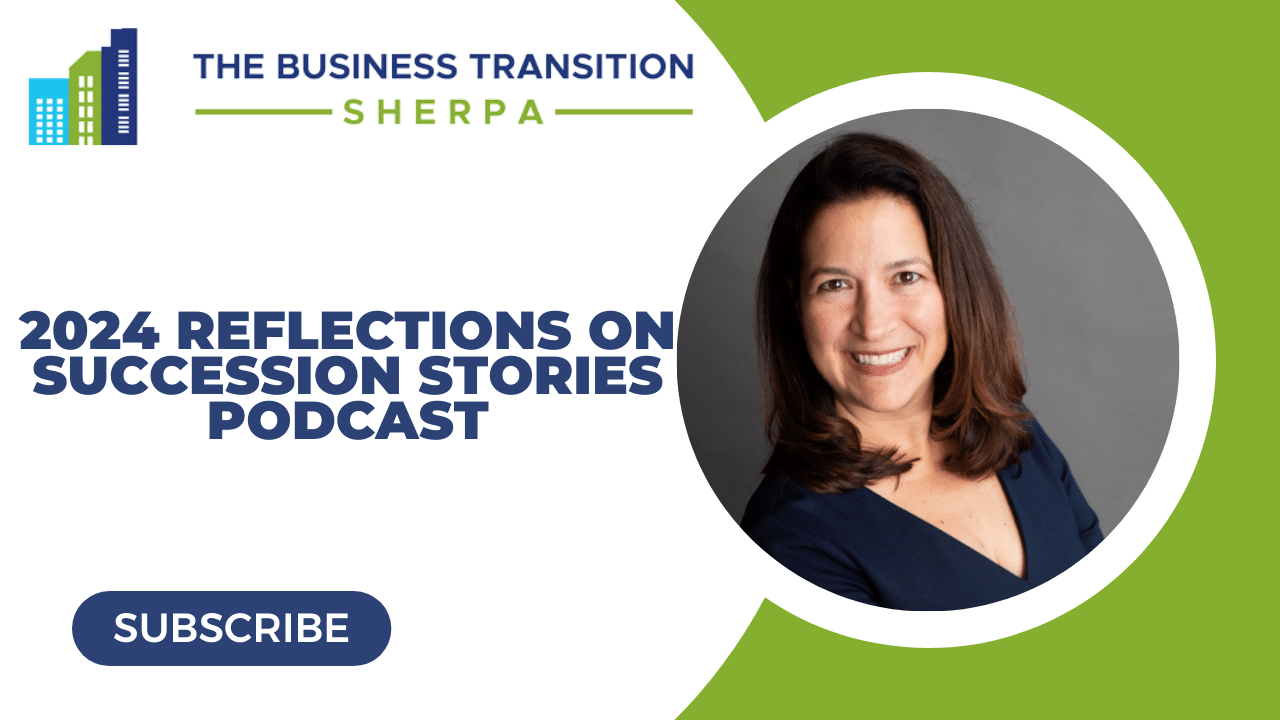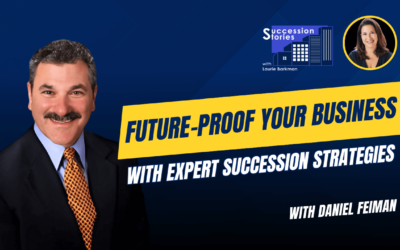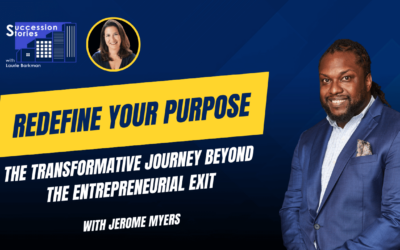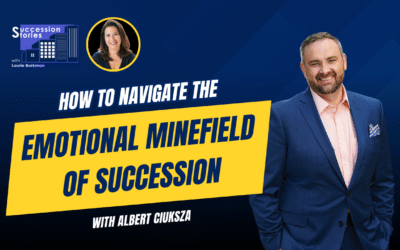Laurie Barkman talks with Dr. JT Kostman, CEO of ProtectedBy.AI and global expert in Artificial Intelligence and Psychology. JT’s unique story began as a homeless nine year old in New York City. During the early part of his career, JT dedicated his life to rescuing others as a paramedic, deep-sea diver, police, and US Army Special Forces. Eventually, that led to a career using data intelligence to protect lives. As a Data Scientist, Mathematician, and Psychologist, he is widely regarded as one of the world’s leading experts in applied artificial intelligence and cognitive computing. In the corporate sector, JT developed solutions for large companies like Digitas, Time Inc, and Samsung. Now as a global entrepreneur, his focus is enabling small and mid-size companies to use data to protect and transform their businesses. It’s an incredible “what’s next” story that is sure to inspire.
Show links:
- Dr JT Kostman LinkedIn: https://www.linkedin.com/in/jtkostman/
- ProtectedBy.Ai Website: https://protectedby.ai/
- Laurie Barkman LinkedIn: https://www.linkedin.com/in/lauriebarkman/
Stay connected with Succession Stories, and follow us for content updates and events:
Succession Stories on LinkedIn
Subscribe to the Succession Stories Podcast and please share a rating and review!
Transcript
Laurie Barkman:
Dr. JT Kostman is the CEO of ProtectedBy.AI and a global expert in Artificial Intelligence and Psychology. His unique story began as a homeless nine year old in New York City. During the early part of his career, JT dedicated his life to rescuing others– as a paramedic, deep-sea diver, police, and US Army Special Forces. Eventually, that led to a career using data intelligence to protect lives. In the corporate sector, JT developed solutions for large companies like Digitas, Time Inc, and Samsung. Now as a global entrepreneur, his focus is enabling small and mid-size companies to use data to protect and transform their businesses. It’s an incredible “what’s next” story that is sure to inspire.
Laurie Barkman:
JT Kostman, welcome to Succession Stories. You have a super interesting background. You’re a data scientist. You’re a mathematician, and a psychologist, which is a really interesting combination. You’re widely regarded as one of the world’s leading experts in applied artificial intelligence and cognitive computing, and I know you don’t get that from the bottom of a crackerjack box. In 2018, I think it was, you launched a company, you’ve got an incredible career journey. I’m excited to welcome you to the show. How are you today?
JT Kostman:
I am excited to be here. Thanks, Laurie. I’ve been looking forward to the conversation, and I’m doing great today. Joe Biden was just sworn in yesterday, that nation is getting back on track. All is good in the universe.
Laurie Barkman:
Oh, let’s get in the universe. Let’s start by talking about you. Because this show is about transitions, and you’ve had a number of them in your career, which I’m sure everyone is going to be really curious to hear about. Let’s talk about your career journey. Where did you grow up? How did you get started? What influenced you along the way?
JT Kostman:
Oh, boy, you want to go that far back? I think my friends taught me I’m probably about 180 years old, if you count by mileage, and not by years. I started out actually as modest as you can. I was a homeless kid. I grew up on the streets of New York. From the time I was nine years old, I moved out onto the streets and lived in the alleys, the subways, the libraries of New York City until I was about 12 years old. I took an apartment with a couple of friends and lived like that until I was 16. 16 is when I escaped from New York just like the movie and made my way out west. That’s where things began professionally for me at least; my journey West and ending up eventually in Nevada, of all places. In Las Vegas. Actually, I was heading for California. It took me about three and a half, almost four months to get that far. I was just wrung out so I just settled in Las Vegas, I enrolled myself in the Southern Nevada Vocational Technical Center in lieu of high school and learned this burgeoning new field called computers. I actually became a computer. That was my first job – that’s back in the days before a computer was a thing and a machine.
Laurie Barkman:
It was a title, a job title.
JT Kostman:
It was a title, it was. My job was computer and I learned to code on an IBM 1620 with Hollerith punch cards. This is back in the 70s, and yeah, started there and moved forward from then.
Laurie Barkman:
Wow, can I ask you a couple of questions about being homeless at nine? What happened? Where were your parents?
JT Kostman:
When my parents lit me on fire for the third time, it probably wasn’t the best way to stay warm, so I found it safer to go to the streets. That was kind of unusual circumstances, one of those Monday night movies of the week kind of things.
Laurie Barkman:
Wow, so you had a pretty tough childhood. Living on the streets, subways, wherever you could. How were you so independent at such a young age?
JT Kostman:
I don’t see it as having been that tough. It was just what life was. There are children around the world right now who have it far tougher than I had it. I had jobs. I worked in a butcher shop, and I worked selling newspapers, and I had some money, and I could get food and I could find warm places to sleep. People, when I tell that, abstractly go, “Oh, my gosh.” It wasn’t that bad. It was my life, and it was what it was. I’ll tell you I once in a very uncharacteristic moment mentioned to my wife, Angie, told her, “You know, I am who I am in spite of how I grew up,” and she said, “That is absolutely not true.” And she’s right. It helped me and shaped me into who I am, so how do you lament it? How do you cry about it? If you’re happy with where you are, then you get to decide to some extent, to a large extent, I think, if not maybe to an entire extent what you do with it. It’s the fundamental stoic philosophy. We control those things we can control. We don’t control those things we can’t, and what can we control? Nothing. Just us, just our attitudes, our beliefs, our behaviors, our actions, what we do, and I took that very seriously starting from a very young age. Honestly, at about nine I decided, if it’s to be it’s up to me. I can. My fate, my destiny and I have to make some decisions and decide what I’m going to do with what’s presented to me.
Laurie Barkman:
You did. and you moved out west and you got an education, and you got a career as a computer. Let’s pick up the story from there. That really began your passion, and understanding data, and working with this newfangled world. You mentioned IBM products and you said this was in the 70s.
JT Kostman:
In the 1970s, yeah. Mid to late 70s.
Laurie Barkman:
Okay, so what happened from there?
JT Kostman:
Oh, boy. From there, I took a really hard left and I decided to change things up again. I was working as a computer, and by then I was 18 years old. Working as a computer then was not quite as glorious as it is now. You were in the basement, and it was noisy, and the cacophony, the volume, I can still hear it, and it was hot, and it was nasty, and nobody wanted to talk. It was terrible and so I did that for a little while. I still had other jobs because it also paid terribly. I was working as a busboy, as a dishwasher in a restaurant, I worked at a construction site and so finally, one day, I just had enough of it and it coincided with I fell and I broke my arm really badly. I broke it in I think 16 or 18 places, really shattered it while I was at work, and so they offered the Workers Compensation Program, said if I went back, and I actually took some college classes, they would give me an extra, I think it was $100 a month, which at the time was a lot of money. I went to the community college and I took two courses, one in psychology, which planted a seed there, and one to become an EMT, an emergency medical technician. By the time I graduated, I was an EMT – excuse me – by the time my arm healed, I graduated, I was an EMT and so I went to work for the local ambulance company and loved it. I went on to become a paramedic eventually. I was interning and working with a very senior paramedic.
We got a call one morning, I thought it would be the greatest day of my life, because my mentor Jay tells me, “Get in the ambulance, we have a call,” I get in the front, I thought, “Oh my goodness, I’ve been promoted.” We showed up at the MGM Grand Hotel which was on fire. At the time, it was the largest hotel fire in American history and lost 88 people on fire. Because Jay was the first paramedic, we did all the Recon and we recovered 86 of the people who perished, we treated over 350 people so the city of Las Vegas sent me to paramedic school in Los Angeles. Here I was, a paramedic a month after my 18th birthday. I went back to Las Vegas and I worked as a paramedic and so without giving you the torturous extension from that, I went from being a paramedic in Nevada and California and I eventually moved back to New York. I worked as a paramedic in New York for a while. Then I met some folks who were commercial deep sea divers that sounded fun and they had a need for medics on the dive rig so I became a commercial diver. The hardhat would be hundreds of feet underwater and working out of chambers and that sort of thing and doing underwater construction and welding and explosives and electronics and did all that for a couple of years traveling around the world. Had a bunch of fun doing that. Eventually I went back to Nevada and met this girl and we’ve now been married for almost 35 years. Literally I came home that day and said, “You know, I just met the girl I’m gonna marry.”
Laurie Barkman:
Love at first sight.
JT Kostman:
Absolutely was. She eventually relented and said yes. It took a while. But then we go on our honeymoon we get back and the paramedic company is closed. No job. So I went to become a cop. They were testing for police officers and so I took the test. I did really well and became a cop. As part of my duties, I was also a coroner’s investigator for a while and then I did undercover work on street crimes and that kind of thing. That was all fun too and during this time, I’m trying to finish college and my beautiful wife, my brilliant wife, has her degree by now. She has a bachelor of science in nursing. Angie has been an ICU nurse for 40 years now. I’ve been begging her to retire for about 25 years. She was just about to, a year ago in January, before COVID, and she can’t bring herself to retire. So 40 years a nurse, she still does bedside care. She’s incredible.
Laurie Barkman:
She’s dedicated.
JT Kostman:
Just amazing. Getting back to my relatively boring story. I wanted to go to college, and I couldn’t, because working a cop shift and that sort of thing. That’s when the first Gulf War broke out, and to make what’s otherwise a really long story short, I went into the military, and I was recruited for Special Forces, essentially. I went on initially as a paratrooper, infantry paratrooper and I went on to US Army Special Forces. I had a lot of fun doing that, and traveling around the world and doing that work and got badly injured and had to come home. When I came home, I decided, “Okay, now it’s time to finish the degrees.” Then I did. Finished my undergrad – I had never finished my undergraduate degree – went on to grad school, was working toward my first PhD in psychology. I wasn’t getting the math there for what I wanted, because I really wanted to understand human behavior, individually and collectively, but empirically, not not just anecdotally so I pursued a second track in mathematics to get work toward a second PhD in mathematics. In parallel, I got really lucky, I got into some great postdoctoral programs and was awarded a couple of National Science Foundation fellowships. I got to do my work at Harvard and MIT and then I did some work at Columbia, some at NYU, my God, I was doing the degree at CUNY at the City University of New York, very open ecosystem, if you will. Then I got selected to do a NATO Advanced Study Institute at the University of Moscow of all places, Moscow State University so I did some of that work there, finished all my graduate degrees and there I was educated.
Laurie Barkman:
That’s an incredible story, just wow. I don’t even know if I can recap. Homeless at nine, employed as a teenager, finds your way to a vocation, which began with being a computer and then through civil service to military service and then back to your education, which ended up becoming so much more than where you initially started with getting your PhD.
JT Kostman:
I never really turned my back on computing. I hated the job. I hated being in a — wasn’t even a cubicle, we were basically at — I didn’t actually even have a desk chair. Actually, it became a big thing because I put my name on the back of the chair because it was my chair. So I could move it, which was great. But I never walked away from computers. I loved that work. And in the early 80s, I was a hacker. When that movie came out, Wargames, I was the one watching and saying, “He got the really cute girl, ” and I thought, ‘I really got to get back into computers.’ I stayed in throughout. I did work in that arena, even while I was a cop. I did work on the birth of MCI, NCIC and CGS and some of the other databases. We hadn’t an official recognition, but using the machine to create composite images of what suspects might look like so instead of an artist, we did it on a Mac. Doing a lot of the database work that this was the early years of. Edgar Codd, had just really done some epic seminal work in what became SQL – Structured Query Language and so working with the databases and being able to digitize to some extent, some of the police stuff, did the same thing with emergency medical services. But then when I went into the military, even though when I was in the field helicopters and guns and running around and that kind of thing while we were in garrison, I was one of the few people who was really computer savvy and ended up working with other branches of the United States government, those that have three letter agencies, three letters, in the name of their agency.
Laurie Barkman:
That cannot be named so that we don’t end up on the no-fly list.
JT Kostman:
Exactly.
Laurie Barkman:
When you got into, call it corporate america if you will, I know you worked for the government for a while, as you said, for various reasons, we can’t really talk deep about that, and before we got on the show together, you said that you have a knack for taking something complex, and making it super understandable and you were sharing the example of helping your granddaughter at age nine or so understand while you’re making her grilled cheese, about natural language processing.
JT Kostman:
Well, you learned everything about them. I’ll do you one better; I teach all the grandchildren. When they are two, I start teaching them about ontologization, and ontologies. The way we do that is with grandpa’s big box of buttons.
Laurie Barkman:
I have no idea what that is.
JT Kostman:
I’m a grandpa, and I have a big box of buttons. It’s as complicated as that. I literally have this big box of buttons. It’s somewhere in my office, huge. I take this box and I pour it out on the carpet and I tell them when they’re to make piles for grandpa. What do they do at first? They put them into piles, which is very nice. But that’s fine. They’ve created a cluster and that’s cool. As they get older, when they come over to the house, I’ll tell them again, same instructions make piles for Grandpa, now things get interesting. At first they do colors, then they may do shapes, then they may do the number of holes in a button, then they may do a combination and what are they doing? tThey’re creating ontologies. As they start to get older, we teach them what that’s really about and do the same thing with everything. My granddaughter, my oldest granddaughter is almost 12 right now, she can probably go toe to toe with any data scientist out there.
Laurie Barkman:
Because you’ve taught the concepts in a way that they can really understand.
JT Kostman:
That’s what I always tell my students; start with concepts, right? Get a conceptual understanding of what it is you’re doing and what you’re looking at, then you can always code. I think it’s malpractice to start from the command prompt. That’s why they hate GitHub. You have a starting place and I think, look, it’s essential that you learn how to code but that’s a different path. It’s a different track. I’m a data scientist, mathematician or psychologist, I think those are distinct, but they converge and so you have to refine those abilities on each one of those paths.
Laurie Barkman:
Some big companies found you and you have those brand names on your resume. Time Inc is a publishing company that people are probably familiar with as well as Keurig Coffee…
JT Kostman:
We were at the time the largest publisher and yeah, I was their chief data officer and a member of the executive committee there helping them run a Fortune 50 company, how crazy is that?
Laurie Barkman:
Well, I was curious for you to talk about that. Why did you go to big companies? What were you looking to help accomplish? Why did they have those positions? What were they looking to accomplish? Where and how did you create value with data? Did you help monetize the data?
JT Kostman:
That’s a great question and I’ll tell you, when I got out of grad school, I went to work initially for the Gallup organization. I was a research director for them and a senior strategic consultant. We helped them capitalize on and monetize a lot of their capabilities, and bring real data real analytics to some of the work they we’re doing, which turned out to be very worthwhile. From there, I got called back into government subsequent to 911 and I ended up working for the Director of National Intelligence, and I worked for all those agencies that we won’t go into detail, but I worked for CIA, DIA, DOT, DHS, FBI, and building most of those capabilities for about a decade and very gratifying work. A lot of the work is still in place and still helping keep people safe. Feel really proud about the work my teams and I did. I’d be happy to tell you what I can about some of that some time. Most of it, a lot of some of it has been declassified and I can talk about some of that.
From there after I left government, I was courted back into the private sector. What I found was, I tell my friends and students I spent the first part of my career as a data scientist looking for serial killers and the last part looking for people who really like cereal, and it’s pretty much the same thing. The algorithms, the math doesn’t care what the target is. I found I was just as able to find lunatic terrorists as I was Mums who really like taking pictures of their children, which is exactly one of the early cases we worked on and in fact use the same algorithms. We used neural networks to be able to locate them and pinpoint them on maps and I found a lot of this transitioned very effectively. I was working initially with some of the big digital media marketing companies digitizing one of the publicist companies and some of the other big firms. That is what got me back into the commercial space and then I was very actively recruited by Samsung to become their chief data scientist and to enable not just their technology, but also their capabilities and how they can leverage and capitalize on data. In fact, the guy who recruited me, Dr. Mark Ramsay, brilliant guy, he’s got like 37 patents to his name.
Just a fun guy too. By the way, side note, he keeps a racing Porsche and a Lamborghini Countach in his garage. He’s like that guy. We got along great and so he brings me in, and he said, Samsung, technologically, Space Age, but from a data perspective, they’re somewhere in the early,mid 1980s, and he wasn’t kidding. People would be shocked at how obsolete the approaches that most even these big companies — not the FAANG companies, I mean, they have their act together — but most of the rest of the Fortune 500, I’ve worked with most of them by now, most of them, you would be shocked at how behind the curve they are. When you think about that chestnut that in this economy, data is the new oil and all companies are now data companies, the most valuable assets are found in our data. Well, it turns out, that’s all true. We really are only as good as the data we have. But more importantly, I had this unfortunate experience of being quoted accurately by the press. The Wall Street Journal asked me about this once and I told them, “It’s not the size of your data. It’s what you do with it that counts,” and I think that most organizations don’t know how to capitalize on that data. My favorite example, I’m sorry to ramble here but when I went to Time, Inc, and I was quoted there very aggressively by the CEO, Joe Ripp, brilliant guy, he’s the guy who basically brought AOL from being a garage band, into the force of nature that it was. That was Joe. Don’t believe what you read in the press. It was Joe, brilliant, visionary, very smart, very capable guy, and very earthy, real guy, we get along great also. But he brought me in, because he said, “I am convinced,” he told me, “We have all these assets that are wasting away, and we’re doing nothing with them,” and when I went to talk to the rest of the senior executive team, to decide whether or not I would take the job, one of the people I met with who will remain nameless, who by the way, we ended up being very good friends, was in charge of revenue, the Chief Revenue Officer for Time and said, “I don’t know what you’re going to do. Frankly, we don’t have any data and we have no way really to capitalize it,” and I said, “Well, you’re the largest publisher in the world, right? And, if nothing else, you’ve been sending me Money Magazine for 10 years, and then I change that, and I move my address and now I have Southern Living. You know something about that, so how much can we impute from this data, and how much can we infer? And how much can we leverage from that?” What that ended up being actually was not just to serve Time Inc. but almost more importantly, to give our customers, the advertisers, better insight into their own customers than they had themselves as a consequence of our relationship with them and what they were looking at, what they were reading, those sorts of things but then also to work with my best friend that became Norman Pearlstine, who’s one of the most regarded journalists in the world, and Norm was actually Content Officer. So how do I get feedback to Norm to say, “Look, this story you wrote was brilliant, and it’ll probably win you guys a Pulitzer but nobody’s reading it.” Part of our agenda or let’s face it, most of our agenda is attaching people to content and understanding what resonates and what doesn’t, and how and why and with whom, and not thinking of audiences as being this monolithic beasty that we call ‘audience’, and being able to segment them smartly, without digressing into the superficial stereotypes, and I have to share this with you. When I went back at Samsung, the president of the Americas at the time who was – what’s the polite word – a moron, comes into a meeting one time and we were looking to increase our sales of smartphones to women, and he said, “Oh, make them pink. Girls like pink.” Dude, I was the one in the meeting, “Dude, you’re killing me. You’re just killing me. No.”
Laurie Barkman:
You found other ways, I’m guessing.
JT Kostman:
Yeah, he’s not there. Well the Uber CEO just went back to prison last week but, the point I’m making is, I have inordinate respect for most CEOs. I think you didn’t get there by being a dummy but most of these men and women who make it to those ranks, did it in a different era and they did it a different time and from a different perspective. Even Jack Welch, who was trained as an engineer – what was the name of his book – From The Gut. You can’t lead a modern organization from the gut, you have to be cognizant of the data and be driven by the data and I think we are the Sherpas, we are the translators, we’re the folks who help connect that to the strategy of the organization and what it’s attempting to accomplish and achieve. That’s in large part what I did.
Laurie Barkman:
I think that’s really important also to underscore for people listening who are in a company, and they’re thinking about their business and thinking, “What hidden assets might I have that can unlock value?” One of those things is the data and there’s a pretty cool saying, I don’t know who the original original person who said it was, “You’re not necessarily selling the quarter inch drill but you you’re selling the quarter inch hole,” and so for a company like Time Inc, or other companies that ultimately know something about their data is informing and their data has value, and how can they productize that service, if you will, and I want to use that as a transition to talk about what you’re doing currently with your company. Let’s talk about your your company, which is called ProtectedBy.AI, which some might find to be an oxymoron if they’re scared of AI so you probably need to unpack the name, a little bit about what you do, what you’re doing and who you’re protecting and tell us what made you start your own company. Did you have an entrepreneurial gene and what made this get to the forefront in your life?
JT Kostman:
For years and years I’ve invested in small companies. I’ve sat on, I can’t tell you how many boards over the years, I’m still one of the judges for the Alchemist Accelerator in Silicon Valley. I was on Samsung’s Open Innovation Center, I was part of that organization. But I’m an angel investor and I was recently on the board of a private equity venture capital fund, where we made some substantial investments. I’ve always had this attachment to entrepreneurs and entrepreneurialism. The reason we decided to start ProtectedBy.AI, however, is for a little bit of a different reason. My co-founder Brian Gallagher, is former Secret Service, and he actually ran the nuclear, biological and chemical response team out of the White House for about a decade. So the inauguration he was back and forth, and the photos making him crazy – he knows Joe Biden very well – when Biden would go over to Seattle, like, “Stop doing that.” He and I met on a Jack Bauer moment kind of a story and it’s actually declassified, I’d be happy to tell you about it sometime. But literally and with saving the life of the president and all that, the peasants rejoice, it was very cool. Brian has been an international serial entrepreneur for years since he left the Secret Service and he decided that in his mission to help protect, and that’s what he does, and that’s what he’s done is protect people property, places, and profits. He comes not quite as dire as my upbringing, but close. His father became bankrupt in his company when they were very young, they ended up living in his aunt’s basement. The challenging economic circumstances made him realize that protecting people is not just about protecting them physically. It’s about protecting their financial wellbeing as well. As he was starting up the idea of this company, he said, if he’s going to be able to help people, he needs to really be able to give them the capabilities they need to succeed, and how do you do that? Through technology and being able to give them the technological capabilities that will help them. That comes from now increasingly artificial intelligence and that area in general. As he tells the story, he did a Google search for, if I’m going to make these investments and do this, let me find the world’s leading thinker in this and he said, “I’m just googling” It’s like, “Hey, I know that guy”. That time I was sitting on a couple of boards, and I was bored, and he knew it, and said, “Why don’t you come back in and we’ll help save people?” “Well, what do you mean?” And that’s what I really love about what we do. At our company, right now, we’re about augmenting human intelligence to protect and advance the economic interests of companies and countries. That’s sort of a tagline but in plain English, here’s what we do, honestly.
We build slingshots and we teach David how to use them to fight Goliath. That’s what we do. What we do is we work with these small and mid sized companies that don’t have the budget that I had at Samsung, or Time Inc or with the government. But in order to survive, let alone thrive in this turbulent, crazy times we’re living in, how do you compete? How do you remain viable? How do you go toe to toe? It’s almost analogous to what would you have done in the early 1900s? If you didn’t have electricity in your company? September fourth, 1882, Edison electrifies, one square mile of Manhattan, and within five years, either you have electricity or you’re out of business. That’s what we’re seeing now. But with artificial intelligence, machine learning, IoT analytics, data science in general, these capabilities, so how could we make these things affordable, and accessible to small and mid cap companies? Could we do that? And we did and so we’ve been inordinately successful over the last year. We work with the US government, of course, but most of our work is with companies that could never otherwise afford those kinds of budgets. We’re even supporting entire countries. Right now, on the African continent, we’re working with South Africa, we’re working with a couple of other countries around the world, to be able to say, in South Africa, as an example, help them in their mission to fight fraud, waste, abuse, corruption, and ensure the equitable distribution of resources. Well, you can’t do that without cutting edge tech and so we not only build those slingshots for David to fight Goliath, we show them how to use them. The model we have we talked about, we address four factors with everyone we work with and by the way, we have a book that we’re working on, I should be typing on right now, coming out soon, and it talks about these four factors: helping them with their strategy, their human capital, their insights they need to lead and to understand their market and their technology and so to our mind, you need strategy, human capital, insights, technology.
Laurie Barkman:
Is that the title of the book? You have to know what your…
JT Kostman:
Know your strategy, human capital, insights, and technology.
Laurie Barkman:
Gotta have a mnemonic that works. So you mentioned your grandfather. Here you are an entrepreneur, and I’m guessing you’re over 50, I won’t ask your age.
JT Kostman:
[Laughs]
Laurie Barkman:
Call it the back half of your career, and here you are starting a new business. I think that that in and of itself is pretty interesting. I mean, obviously, you’re at the cutting edge of a lot of technology. You’ve been working for a lot of years. But starting a business from scratch is not easy and so would you say that you were coming out of retirement? You said you were bored. You were serving on boards, you were bored, were you in sort of a retirement phase, and then this is now post-retirement, you’re in a startup, this is crazy.
JT Kostman:
I thought I was going to be in retirement but I’m not the guy who retires and I think nowadays very few people are. The idea of retirement in the classic sense, I think I had a period of time when I was injured when I left the military and I couldn’t walk. I was bedridden. I was not in a mindset to really engage myself and I could feel my mind starting to atrophy. I truly could, after a couple of months of just watching TV and it’s even before social media. I basically watched stupid TV and did not much of anything else for a couple of months and I could feel my brain starting to decay, starting to get older and slower and that’s what happens to us. We’ll talk another time about some wonderful work that’s been done in neurophysiology that actually starts with a cloister of nuns in Mankato, Wisconsin – very cool story. It turns out that that old myth that you inevitably head toward senility and Alzheimer’s and cognitive deficiencies and defects and deficit, total myth. Your brain continues to grow new dendritic pathways, new neuronal connections throughout your life so long as you train it. It’s like going to the gym. You have to stress it, and you have to keep pushing it and you have to keep exercising. It’s the same, literally as a physical workout and it is physical. It’s biologic, it’s physiologic and so for me the idea of sitting on the porch or playing shuffleboard, I am going to kill myself in a couple of weeks. More importantly, my wife would kill after a couple of weeks. In fact, when I retired for the first time, I was sitting around the house, and she comes into my office. It’s a really big house so I don’t bother her. But she comes up to me and says, “Go back to work, you’re driving me crazy. I can’t stand you just being home.”
Laurie Barkman:
That’s how you’re wired. That does not surprise me at all. They’re probably people listening, who are thinking, “Oh, I might want to sell my company but I don’t know what I would do next.” Then there’s other people that think, “Oh, I know what I would do next, I have x and y and z planned.” I think of it as having a portfolio in life where you’re serving on boards, you’re doing nonprofit work, you’re giving back to the community, you have your family, and you have your work that challenges you. It makes you happy and I guess it leads me to my next question. How do you define success?
JT Kostman:
When I was in grad school, I got talking to a couple of people, and I told her, “Honey, do you know that if I really dig deep, I might make $100,000 some year?” Wow. We were both like “No, don’t be ridiculous, you’d never make money like that.” Now, a starting data scientist right out of school, can make multiples of that, let alone if they have some real expertise in AI and machine learning, and now with the democratization of education, as a consequence of MOOCs, and resources, Udemy, and all these things that are available to people and increasingly, I think one of the bizarre collaterals positive things that came out of the Trump administration was cracking down on immigrants and H1 visas and those sorts of things, well, you add COVID, to that, and we’ve come to realize we can virtualize talent. People can be anywhere now. they can get educated however they want, take a non traditional path. If they have the inclination and the interest to get into this particular profession, make a damn lot of money and have a great time doing it. All it really takes is your willingness to do that.
But then, and I’m sorry to dwell so long on this but when we’re talking about success in that regard, I’m always reminded of a friend who is very successful but he’s also a great musician, great guitarist, and he sings beautifully. We were with one of our friends one day, and Steve was just fiddling around a guitar just playing a little bit and this guy who had just retired, he was an executive for the Federal Reserve Bank but he also plays gigs on the weekend and this other friend of ours said, “I would do anything to play like you, Steve. I would love to play like you,” and Steve said, “No, you wouldn’t.” “What do you mean? No, I’m telling you, I would,” he said, “No, you wouldn’t. You know why I can play like this? I play like this because I play every day. I practice every day. And you know why I did that? Because I love it. Because I really love it.” That’s success.
Laurie Barkman:
That’s success. Right. Well, you’ve got an amazing background. I really appreciate you going deep and sharing even back to when you were nine and homeless because it really helps, I think, set the tone for who you are JT, which is, really, an amazing person. In my last couple of questions, is there anything else that you can share about favorite sayings or mantras about entrepreneurship or leadership that help drive you forward?
JT Kostman:
I would say, one of my mentors gave me some advice when I was very young that stuck with me. He said, “Let me tell you the secret to achieving anything you want in your life – three things,” and by the way, absolutely not kidding. This has been the guide of my life. I’m going to give you this for free. This is really what changed my life. There’s only three things you have to do. Number one, decide what it is you really want, with absolute particularity and clarity. Get a vision in your mind. Not, “I want to be successful. I want to be…” No, no, no. You say to yourself exactly, “I want this.” Make it a SMART goal. Write specific, measurable, achievable, realistic, time constrained, “That’s what I want.” Step one, know what you want. Step two, find out how much it costs. What’s the sweat you’ll have to put in? What’s the time you’ll have to put in? What’s the tuition you’d have to pay? What books do you have to read? Who do you have to work with? Who do you have to meet? Step two, find out what it costs. Step three, pay that price. That’s it.
Laurie Barkman:
Pay the price.
JT Kostman:
Find out what you want, find out what it costs, pay the price.
Laurie Barkman:
Great words to live by and aspire to, JT. Thank you so much for joining me today. If people want to find you online how do they do that?
JT Kostman:
You can go to our website at – interestingly enough – protectedby.ai There you go. You’ll find me there. I am occasionally on LinkedIn. I have a love-hate relationship with LinkedIn so sometimes I’m on sometimes I’m not. But you can find me through my site, through my writings, through the books. By the way, anyone who’s aspiring into this profession, drop me a note. I leave time open every Friday to talk to people who are either aspiring data scientists, mathematicians, psychologists, professionals, people who are interested in artificial intelligence. On the other hand either aspiring or struggling entrepreneurs so if you’re having challenges, if you just need someone to talk to, that’s what I do. I’m happy to have the conversation. We’ll find a time.
Laurie Barkman:
Thank you so much, JT. It was great to talk with you today.
JT Kostman:
It’s great to talk with you. Take care.
Laurie Barkman:
Listeners, thank you so much for tuning in. You can always catch Succession Stories on any of your favorite podcast players or YouTube. Don’t forget to like and subscribe to the show! If you want to maximize the value of your business and plan for future transition, reach out to me for a complimentary assessment at meetlauriebarkman.com. Tune in next week for more insights from transition to transaction. Until then…here’s to your success.
My objective is for you to have a lucrative and successful succession. If you want to understand the value of your company today, the potential net proceeds of a transaction, and your financial needs after you leave the business, that’s a great place to start. The sooner you understand these numbers, the more time you’ll have to close the gap, if there is one. Take the next step by requesting an initial meeting to begin planning for your business transition and strategic exit today. Request a call with me at meetlauriebarkman.com

